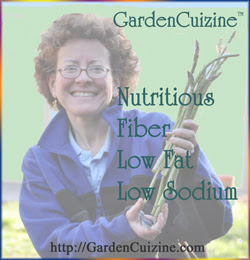In recent years there has been a surge of interest in Gut Health and Gut Microbiota. As a Clinical Outpatient Registered Dietitian I provide nutrition counseling for patients battling or wanting to prevent diseases that include: Obesity, Insulin Resistance, Diabetes, Dyslipidemia, Crohn's disease, Ulcerative Colitis and Irritable Bowl Syndrome (IBS). Scientific research is ongoing and showing promise for all ages across the lifespan - infants, children and adults - including Individuals with these diseases (and other conditions) for health benefits from Pre- and Probiotics.
In October 2013, an expert panel was formed by the International Scientific Association for Prebiotics and Probiotics (ISAPP) to further discuss and study the emerging science of how they benefit human health.
Recently, I taught a Cooking Class at Inspira Health Network on this very topic. I had more people sign up than I expected! Most participants had heard of probiotics; more so than prebiotics. Below is a brief RD chat on the subject. Recipes will follow.
Prebiotics
Prebiotics are non-digestible dietary fibers that feed Probiotics. Prebiotics are usually found in plant foods; but, did you know that there are a number of prebiotics in human milk too? Yet, another reason making breastfeeding superior nourishment for babies. Prebiotics enhance calcium absorption and help in the relief of constipation and diarrhea.
Prebiotic foods include: whole grains, onions, bananas, garlic, honey, leeks, asparagus, cabbage, soybeans, dandelion greens, artichokes, chicory root, Jerusalem artichokes, bran and of course Prebiotic fortified foods and Prebiotic dietary supplements.
Probiotics
Probiotics are microorganisms that when ingested have a positive benefit on our health; especially digestive health and immune system. Foods and beverages that offer probiotics must contain live cultures as found in Macrobiotic, Vegan products, such as: miso, tempeh, soy sauce and fermented soybeans called natto.
Other, more common probiotic foods include: fermented vegetables, such as: sauerkraut, pickles; aged cheeses, yogurt (with live active cultures), kefir and kombucha tea. Other functional foods include products such as Siggi's Filmjölk, a Swedish drinkable yogurt, and Special K Nourish cereal with added probiotics.
- It is important to note that some yogurts and most store sold sauerkraut and pickles are heat treated at high temperature, which kills probiotic cultures.
- Fermented dairy products are often better tolerated by individuals who are lactose intolerant because the good bacteria metabolizes the lactose into lactic acid. The result is a creamy buttermilk-like flavor.
- Yeast-risen breads, Coffee, some teas and Chocolate have fermentation involved in their production. However, they are not considered probiotic foods since the cultures are not living when consumed.
Carefully reading product labels helps in selecting foods containing beneficial pre- and probiotics. Look for the freshness date and the name of the microorganisms. Look for the National Yogurt Associations "Live and Active Culture" seal on yogurts with probiotics.
Probiotics work by colonizing and crowding out the bad potential pathogens, replacing the bad bacteria with good bacteria; breaking down toxins in the gut. Probiotics play an important role in digesting proteins. They produce anti-microbial substances along with needed B vitamins and Vitamin K.
Low Sodium Diet Helpful
Gut microbiota is sensitive to a high sodium diet. To improve immune dysfunction, hypertension and autoimmune diseases a low sodium diet may be helpful to gut lactobacilli. Limiting added salt at the table and cooking more at home is the best way to control dietary sodium. Sodium is high in most prepared foods eaten out in restaurants. The Dietary Guidelines for Americans recommends keeping dietary sodium under 2,300 mg per day.
Check with your Doctor if you have unwanted symptoms or medical conditions. Blog post and photo Copyright (C) Diana Wind. All rights reserved.
References:
- Younis K, Ahmad S, Jahan K (2015) Health Benefits and Application of Prebiotics in Foods. J Food Process Technology 6:433. doi: 10.4172/2157-7110.1000433
- Mozaffarian, D., Hao, T., Rimm, E. B., Willett, W. C. & Hu, F. B. Changes in diet and lifestyle and long-term weight gain in women and men. N. Engl. J. Med. 364, 2392–2404 (2011).
- Gibson GR. Dietary Modulation of the Human Gut Microflora Using the Prebiotics Oligofructose and Inulin. Am Socity Nutr Sci. 1999;129:1438S-1441S.
- American Nutrition Assoc. Nutrition Digest. Vol 38 No.2 Assessed 1/13/17 http://americannutritionassociation.org/newsletter/science-probiotics
Consumer Reports Top 5 Probiotics of 2017
Prebiotics and Probiotics, Creating a Healthier You
Live and Active Cultures Yogurt Facts
The Microbiology of Chocolate
What dose is recommended? Is more better?
Do Probiotics Work?





























No comments:
Post a Comment